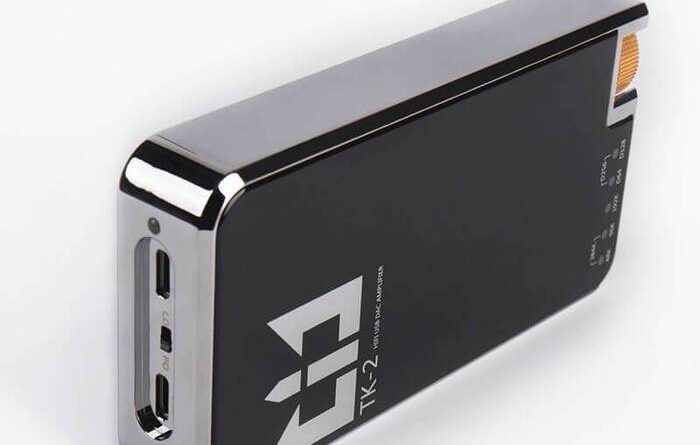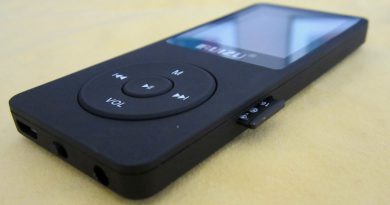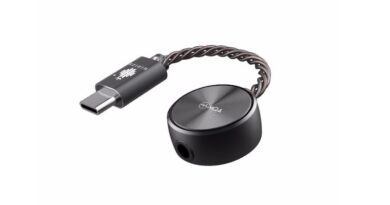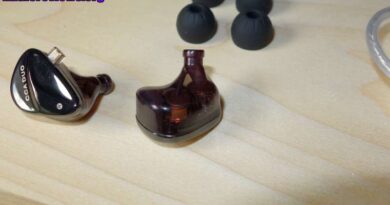TRI TK-2 DAC/Amp Review– NICE “TRI”!
First and foremost, this is not going to be a technical review. Simply because I don’t own a fancy Audio Precision analyzer that displays graphs and numbers… That frankly, makes absolutely no sense to 99% of common folks like you and me.
My impressions are purely based on the “best” set of audio analyzer I own, which is my pair of ears. Before I dive into the US$290 TRI TK-2, a bit of background story. I knew KB EAR /TRI Audio was planning a dongle DAC/Amp device back in Spring 2020. That time their idea was very vague but their owner did ask my opinion on a possible dongle DAC/Amp solution.
At that time, I wasn’t too keen on their proposal since most dongle DACs I have tried are either quite weak or sounded mediocre. The idea of sharing battery power with the source (the phone) is unappealing to me. I told him I will explore his plans further but I didn’t actually do so… At least not until this year when the donglemadness movement exploded.
Few months ago, I saw a series of photos on Weibo showing KB EAR show booth at an audio event in Mainland China. On the table was a portable device with a TRI logo on it. I knew immediately that was it! That’s the DAC/Amp device which KB EAR had been planning all this time.
Today we know this device turned out to be a collaboration between TRI Audio and KAEI. But who is KAEI? This brand is relatively unknown to those of us outside of Mainland China. Also known as 小林KAEI, they started business producing DIY amps before moving to portable DAPs. Today, the company produces a TOTL iOS-based audiophile digital audio player called DAP-3.
Just imagine a souped-up version of iPod with dual ESS Sabre ES9038Pro DACs and a powerful amp section… That’s how I would describe it. This is the first collaboration between the two brands to bring new variety to the already saturated DAC/Amp market. The innards of TRI TK-2 are largely based on the now discontinued KAEI HP-100.Let’s take a look if the TK-2 can live up to the hype to become one of the mainstream products like the Chord Mojo or the iFi Hip-DAC.
DISCLAIMER: The TRI TK-2 was sent to me “partially” free-of-charge (I paid for the FedEx International Priority shipping) as a review unit; however, this won’t affect my overall impressions.
HITS
Neutral and balance sound signature with a hint of warmth. Pleasant and linear tuning that is neither too harsh nor too smooth. A wide dynamic range that is both accurate and coherent. Good note weight that is engaging and musical. Great extension at both ends of the frequency spectrum. Transients and attacks are fast with good energy and control that is able to handle even the most complex and demanding music tracks. Textured, open and weighty bass notes. Good midrange presence that is neither forward or recess. There is a hint of softness in the midrange texture and quality, giving each note a refined, luscious and sophisticated presentation.
Nonetheless, the sense of clarity in macro and micro details are still very much preserved. Vocal is positioned at the right depth, which is both inviting and pleasing to listen for hours. Treble is neither bright, grainy nor sibilant. Top-end is open, airy, slightly reverberated that really helps to portray a sense of space. As a result, soundstage has good dimensions in both height and depth.
Placement has a reliable distinction between each and every instrument and singer with ambient details such as echoes and sound reverbs, allowing them to excel and shine. Imaging and layering capabilities are exceptional as well. The TK-2 has a sustaining transients and decay that gives a natural and clean timbre to instruments such as acoustic guitar and violin.
Equally-distributed power of 1,250mW@32Ω to all 3.5mm single-ended, 4.4mm and 2.5mm balanced outputs! (a rarity in budget amps) Class AB amplifier able to churn out lots of clean power with minimum distortion.
When the volume knob turns past 60% or at around 2 o’clock, that is where the magic begins. TK-2 emits a soft “click” and kicks into Turbo mode or high gain. In Turbo mode, TK-2 becomes a Class A amplifier that is able to drive planar headphones such as HifiMan Sundara. You can hear the differences not just in volume gain but the richness in tonality immediately.
Supports Line Out (LO) function. Supports both USB Type-C PD (Power Delivery) and QC3.0 fast charging. Recessed volume knob to prevent accidental movement. No low-volume channel imbalance (on my unit), unlike some iFi products. The L-shaped USB Type-C data cable and Apple Lightning adapter are very thoughtful inclusion. Unlike many DAC/Amps today, TK-2 radiates very little heat even in Turbo Mode (Class A). It feels slightly warm to the touch even with more than 2 hours of continuous usage driving the 300Ω Sennheiser HD600 headphone.
MISSES
No MQA support…. (Frankly I don’t care about the format). Look and feel “chonky” due to its 24mm (1-inch) thickness, which makes it less portable than some DAPs or even a phone with dongle. The silver finishing a fingerprint magnet according to feedback (I have the black version).
No Bluetooth or Line In function. No battery power indicator. No bass boost or tonal selection. Clean but not ultra-clean noise floor with sensitive IEMs such as Campfire Andromeda. Average battery life lasted 8 hours powering just IEMs. Volume knob feels loose and sensitive to the slightest touch; just be careful.
Sound-wise, sub-bass doesn’t go as deep as some other portable amps such as Chord Mojo. Treble can sound a tad bit bright on some tracks. Armed with dual ESS Sabre ES9038Q2M DACs, I expected the soundstage, imaging and layering to be even better but hey, I am just nitpicking here. No dedicated phone app to tweak DAC settings and EQ.
Is this thing firmware-upgradeable? (there is no information from KB EAR) To be honest, it is kind of pricey at US$290 when there are much lower-priced DAC/Amp with better features and future-proof firmware support.
CONCLUSION
The TRI TK-2 is very hard to dislike. It sounds impressively musical, natural, smooth and pleasing to the ears. As a neutral source, TK-2 is able to pair well with any transducer and is ideal for both testing and evaluation. It has more than enough power capable of driving just about every load; from IEMs to headphones.
Technicalities are stellar for the price especially in terms of tonality, transient, dynamics, resolution, soundstage, imaging, instrument separation and layering. However, lack of useful features such as dedicated app support, MQA support, aptX-HD Bluetooth and Line In function, average battery life and questionable firmware upgradeability can be a deal-breaker to some folks, especially when compared to the competitors at similar or lower price range. Nevertheless, TRI Audio and KAEI have done a fantastic job producing this desktop-caliber powerhouse.
Nice “TRI” guys!







My TRI TK-2 arrived today. It looks gorgeous and it sounds fine (dead silent even with my IEMs). But I am disappointed that its amp stage is so weak: With my Timeless 7Hz IEMs I have to go to volume maximum with quieter files (I am on 3,5mm and do net yet have a balanced cable). And it never gets as loud as with my Topping NX4DSD or a FiiO Q3. And so far I could not bring it to show DSD decoding. All my test files did play, but everything over 384 kHz gives only the 48K and 96K led meaning 394.
And it is the fingerprint magnet that you had to expect (I took the shiny version not the matte black one.)
Da stimmt was nicht. Frag mal bei KBEAR nach.
Hast du da einen Ansprechpartner für mich?
wendy@kb-ear.com
Wendy Li
Schau doch erst mal, wie das Ding mit allen anderen IEMS und Headphones funktioniert. Und dan mit verschiedenen Muskiquellen. Author Larry hat mir erzählt, der TK-2 hat eine Mords Power.
Gibts da vielleicht einen “Gain Schalter”?
Ich kann mir nicht vorstellen, dass er nur so halb funktioniert.
“Leider” habe ich keine schwierig anzutreibenden IEMs oder Kopfhörer (mehr). Der einzige Kandidat wäre man früherer TinHifi P1 gewesen, bei dem manche meiner tragbaren Verstärker reihenweise schlapp gemacht haben (Dongles sowieso). Jetzt habe ich nur meinen alten DT770 80 Ohm aus dem Schrank geholt. Den konnte ich gerade so laut einstellen, mehr aber auch nicht.
Das Gerät hat keinen Gain-Schalter. Nur LO/PO, variabel versus fest. Ich höre auch nicht, daß beim Hochdrehen der Lautsträrke irgendwann in einen High Gain mode umgeschaltet würde.